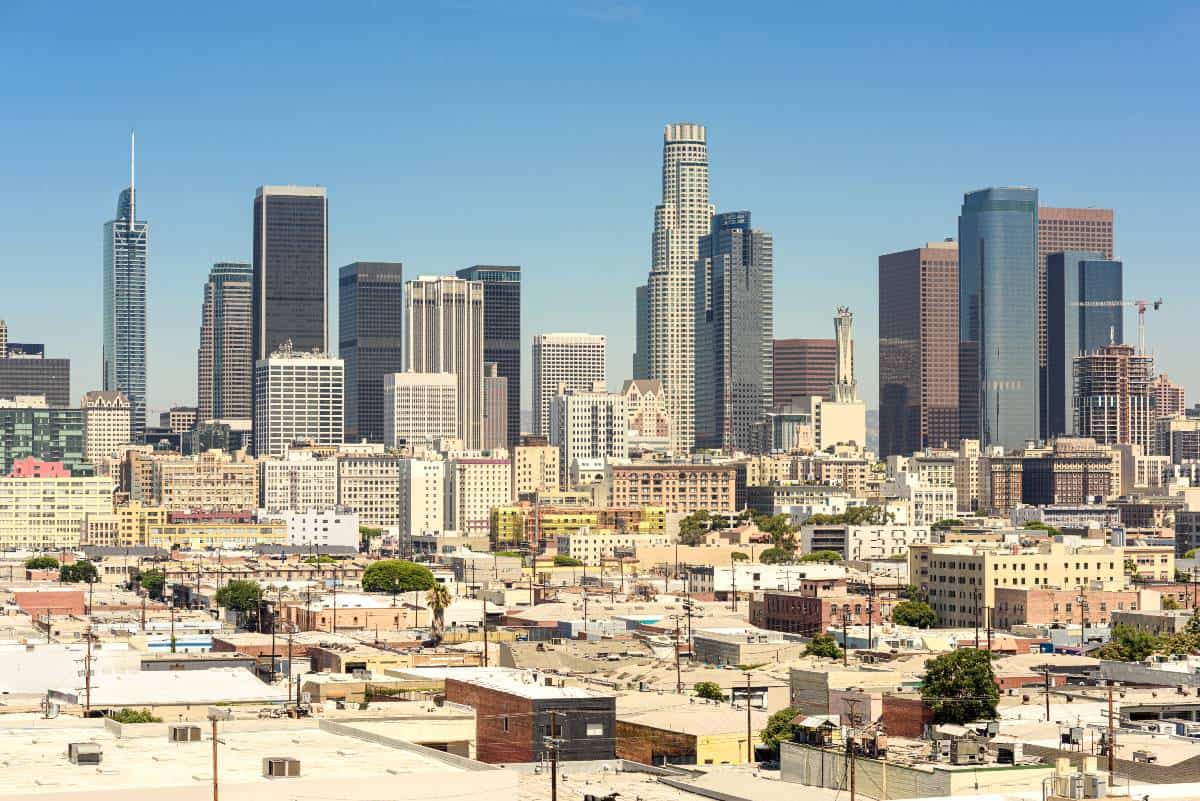In my 18 years facilitating commercial real estate transactions throughout Los Angeles, I’ve seen firsthand how the city’s ever-changing demographics shape promising new niches for savvy investors. With LA’s population projected to reach 11 million residents by 2050, our diverse communities’ evolving needs reveal lucrative opportunities.
Key Takeaways
- Demographic data reveals promising real estate investment opportunities tailored to LA’s dynamic population growth and evolving housing needs
- Factoring in cultural diversity, aging trends, urbanization, and other population shifts allows investors to cater to target tenants’ preferences
- Aligning properties and locations with specific generational and cultural preferences can drive demand and maximize returns
Table of Contents
Leveraging Demographic Shifts to Uncover Lucrative Los Angeles Property Investment Opportunities
LA’s Population Boom Fuels Housing Demand
Los Angeles continues experiencing rapid population growth. Our total housing units fail to meet the demands of an influx averaging over 40,000 new residents annually. Los Angeles’ population increases alongside the growing number of single-person households, stemming from divorce, widowhood, or lifestyle preferences. We also see more multigenerational families sharing accommodations.
These evolving household structures increase rental demand for:
- Compact, affordable apartments
- Multi-family properties
- Shared and co-living spaces
The county’s generational differences also widen housing supply and demand misalignments. Maturing baby boomers and Gen X seek senior-friendly, low-maintenance properties. By contrast, millennial and Gen Z predilections for urban, eco-conscious living arrangements remain underserved.
Catering to these varied generational housing priorities presents lucrative prospects. However effectively positioning investments requires analyzing associated lifestyle preferences and price-point differences.
Cultural Diversity Reshapes Neighborhoods
Los Angeles’ rich cultural diversity constantly redefines neighborhoods. Ongoing migration from Asia and Latin America increasingly diversifies the metro’s ethnic composition. Investments should align with the traditions, values, and space requirements preferred across cultures.
Consider how Los Angeles County’s Asian population concentration rose over 150% from 1980-2019. Within Greater LA, Asian Americans already comprise significant portions of primary demographic groups, including:
- 27% of households
- 36% of recent homebuyers
- 31% of renters
This exemplifies the opportunities to adapt properties to serve the needs of LA’s multicultural communities. Investors who proactively upgrade amenities to foster communal bonds and convenience can outcompete outdated offerings.
Rapid Urbanization Changes Real Estate Preferences
Los Angeles participates in the global trend toward urbanization. Currently, around 80% of Angelenos live in metropolitan areas, with projections rising over 85% by 2060.
Urbanization fuels a growing millennial appetite for downtown adjacent, transit-accessible housing. The increased density of high-rise residential development brings lucrative prospects but also displacement risks. As downtown neighborhoods gentrify, lower-income residents get priced out.
The revitalization of LA’s urban core also requires updating aging properties to modern sustainability standards. Savvy investors should evaluate smart building upgrades to:
- Improve energy and water efficiency
- Enhance resilience
- Provide amenities like EV charging
These value-adding enhancements help attract tenants by lowering operating costs and environmental footprints.

Economic Expansions Underpin Real Estate Prospects
Los Angeles’ continued economic and job growth further bolsters real estate investment potential. Major development projects, like the LAX Airport Renovation and Lucas Museum of Narrative Art, generate employment opportunities. Recent years saw unemployment rates dip below 5% alongside median income levels rising over 10%.
This strengthening economic landscape increases housing demand across price points. Investors should seek prospects in lower-cost neighborhoods undergoing revitalization. Leveraging opportunity zone incentives can facilitate projects upgrading dated properties while avoiding displacement risks.
Adapting Investments for an Aging Population
The Baby Boomer generation continues advancing into retirement. By 2030, over 15% of LA’s population will consist of seniors aged 65+. With longer life expectancies, vibrant seniors seeking convenient amenities for active lifestyles present opportunities.
Still, housing inventory shortages persist for aging Angelenos requiring accessible, disability-friendly accommodations. Investing in universal design features like ramps, grab bars, and wide hallways can open new markets.
Healthcare services remain inadequate given the current population-to-provider ratios. LA needs at least 4,000 more nurses to meet senior community needs by 2030. Investments serving memory and elder care facilities help fill critical healthcare gaps.
Align Investments to Evolving Community Priorities
Effectively optimizing investments around LA’s cultural and demographic shifts involves:
• Continually Evaluating Emerging Lifestyle Preferences: Connect with property managers to gather insights on amenities sparking tenant demand. Survey residents to guide upgrades matching generational priorities.
• Analyzing Neighborhood Transitions: Monitor indicators of demographic changes using tools like PopStats. Determine vulnerability to displacement by engaging with community groups.
• Future-Proofing Properties Proactively: Implement smart building infrastructure to streamline sustainability upgrades. Seek green building certifications to access incentives and tax rebates.
I constantly adjust strategies, tailoring properties and locations to resonate with target investment demographics. Join me in uncovering LA’s next lucrative submarkets!
Demographic Changes and LA Property Investment
Commercial Real Estate Market Trends in LA
Los Angeles remains one of the top commercial real estate markets in the nation, underpinned by a strong economy and steady population growth. Several key factors currently shape opportunities and risks across LA’s office, industrial, retail, and multifamily sectors.
Demographic Shifts
Los Angeles County’s population now exceeds 10 million residents and continues to rise by over 1% annually. The region attracts domestic and international migration with its thriving job market and sunny climate. LA also has a relatively young population, with over 30% under age 25. These demographics signal ongoing demand for both residential and commercial space. However, generational differences impact preferences, as maturing millennials seek neighborhood amenities while baby boomers retire. Investors must align properties with emerging lifestyle needs across age groups.
Economic Expansion
Robust job growth across technology, healthcare, construction, and leisure/hospitality industries contributes to declining unemployment and rising wages. Major development projects like SoFi Stadium and corporate expansions from Apple and Amazon further boost the economy. This strengthens office, retail, and multifamily fundamentals but also strains industrial supply chains. While the future remains unpredictable, LA’s diversified economy provides relative stability amid market volatility.
Tightening Vacancy Rates
LA’s limited land availability coupled with the high demand for space, applies downward pressure on vacancy rates. Industrial availability hit all-time lows under 1% in late 2022 as e-commerce leasing surged. Class A office vacancy also hovers below 13% thanks to tech and creative sector growth. Multifamily vacancy remains extremely tight around 4%. While rents and sale prices appreciate with demand outweighing supply, upside risks depend on avoiding an overheated bubble.
Rapid Urbanization
Currently, 79% of LA County’s population concentrates in metropolitan areas, mainly around Downtown LA. Urbanization increases alongside expanding public transit networks and shifting growth patterns. Compact walkable neighborhoods with retail, dining, and entertainment see rising appetite—but also displacement risks as luxury high-rises enter. Sustainable transit-oriented projects cater well to younger professionals. However, site selection requires weighing future gentrification impacts on vulnerable groups.
Commercial Real Estate Investment Strategies
With its vibrant economy and diverse industry base, Los Angeles offers compelling opportunities for commercial real estate investment. However, effectively capitalizing on the area’s potential requires strategic planning tailored to this unique market. As an investor, understanding the perspectives of key stakeholder groups, from tenants to policymakers, is essential to make informed decisions. This article explores factors shaping lucrative prospects and risks from multiple vantage points.
The Investor Lens
For investors, Los Angeles provides a relatively stable and mature real estate landscape. Major sectors like technology, logistics, healthcare, and hospitality will likely continue fueling office, industrial, and retail demand. However, factors like sustainability and resilience gain increasing priority – upgraded properties aligning with these priorities can unlock higher rents and valuations.
Although the market’s promising fundamentals appear to justify higher allocation, moderation is still prudent given economic uncertainty. Portfolio diversification across more affordable secondary markets helps balance returns and risks. Ultimately, the outlook seems optimistic but demands active management adapting to shifting needs.
The Tenant Perspective
In LA’s tight leasing environment, tenants find themselves with diminishing negotiating power. With industrial availability recently dropping below 1% and office vacancy around 12%, competition for space grows fierce. For office and retail tenants, choosing newer Class A buildings brings conveniences but also considerably higher rents. Many small businesses and non-profits face displacement from revitalizing neighborhoods.
However, governmental incentives and programs offer some relief – opportunity zones, transit-oriented communities, and sustainability funding can facilitate access to affordable spaces. Overall, proactive planning and early lease renewals become essential to securing appealing accommodations without overextending budgets.
The Policy Lens
From a policy perspective, much emphasis focuses on balancing LA’s growth with equity concerns. As investments modernize neighborhoods, vulnerable residents risk displacement. Updated zoning, housing ordinances, and programs like linkage fees aim to mitigate hardships but may also increase regulatory burdens. Transportation and sustainability goals also impact standards – with long timelines, understanding future code changes is key. Furthermore, while LA currently maintains relatively business-friendly practices, political shifts could reshape approaches. Maintaining channels to provide investor input helps smooth public and private sector cooperation. With thoughtful collaboration, supportive policies and incentives can be crafted to enable prosperity-sharing growth.

Evaluating Attractive Investments
Several key factors make an LA commercial real estate investment attractive, including:
Growth Potential: Neighborhoods zoned for further development and population expansion generally offer strong prospects.
Accessibility: Areas near major highways, public transit, and LAX airport promise convenience that supports demand.
Tenant Mix: A diverse tenant base mitigates reliance on any single industry, reducing occupancy volatility.
Infrastructure: Modern building systems and amenities like EV charging stations satisfy business needs with less risk of obsolescence.
Los Angeles Commercial Real Estate Market Overview
Spanning Los Angeles County’s 4,751 square miles, Greater Los Angeles represents one of the nation’s largest metro areas. Continuous population growth stemming from domestic and international migration reflects the region’s strong job market and sunny climate. This steady influx and economic expansion contribute to rising property values and healthy investment performance for multifamily, office, industrial, and retail assets.
Robust Appreciation Trends
The Los Angeles metro area is known for consistent, long-term property appreciation thanks to factors like high barriers limiting new construction alongside strong housing demand. According to a recent analysis, average commercial real estate values in Greater LA grew over 7% annually in the past decade. Industrial led appreciation with average gains above 10% yearly fueled by booming logistics and e-commerce. Multifamily and office assets saw an average annual growth of around 5-6% supported by the region’s expanding professional services. While past performance doesn’t guarantee future results, demographic projections suggest ongoing tailwinds.
Strong Fundamentals Attract Investment
Los Angeles’ stability, diversified economy, and tightly constrained developable land make commercial real estate holdings highly attractive for investors seeking alternatives to volatile securities. Total investment across retail, office, industrial, and multifamily averaged over $35 billion in the past three years. LA captures the largest share of foreign real estate investment in California and the second highest nationally. Cross-border capital predominantly targets downtown office towers, new multifamily projects in gentrifying neighborhoods, logistics facilities near the ports of Los Angeles and Long Beach, and premium malls with luxury retail. Domestically, NYC and SF-based investors actively acquire income-generating assets that promise relatively higher yields than their pricier home cities.
Submarkets Offer Varied Opportunities
While Los Angeles real estate broadly offers lucrative prospects, returns vary greatly depending on submarket nuances. For example, Westside office buildings with tech or entertainment tenants may provide extremely low vacancies but lower yields due to steep pricing. Comparatively, an East LA industrial facility located in an opportunity zone could promise higher returns through value-add upgrades facilitated via tax incentives. Additionally, new mixed-use apartment complexes near Metro stations cater well to transit-oriented urban professionals but may carry heavy upfront development costs. Conducting in-depth neighborhood analysis is key to optimizing investments.
FAQs
What LA neighborhoods show indications of future gentrification risks?
Urban neighborhoods like Boyle Heights, Highland Park, and Echo Park exhibit early signs of gentrification based on factors like rising housing costs, shifting demographics, and new development.
How can multi-family properties be adapted to serve LA’s cultural diversity better?
Upgrades like expanded kitchen spaces, communal vegetable gardens, places of worship, and language services help meet unique household needs.
What building codes support multigenerational housing development?
Standards like the California Building Code safeguard fire safety, accessibility, and structural requirements for multigenerational home additions.
Which locations offer strong investment prospects amid recent economic growth?
Revitalizing areas like Downtown Inglewood, Hollywood, and North Hollywood offer relatively affordable opportunities given forecasted development.
What sustainability features align with environmentally-conscious renters and buyers?
EV charging stations, renewable energy, green spaces, smart waste management, and climate resilience measures satisfy demand.
Conclusion
LA’s ever-evolving population mix presents lucrative prospects for investors closely aligned with our communities’ emerging needs. Let’s connect to discuss how you can capitalize on demographic shifts in our dynamic real estate landscape. Schedule a consultation today to start strategizing customized opportunities!




